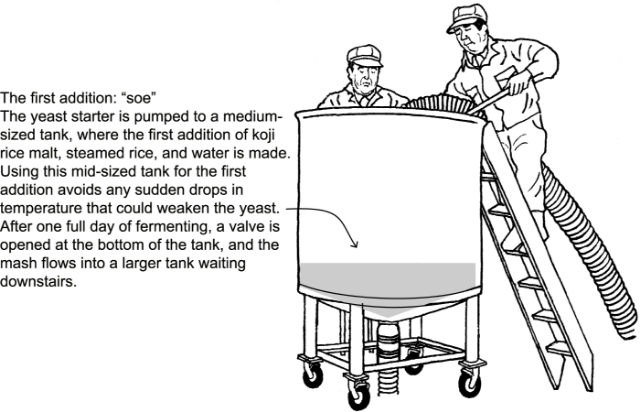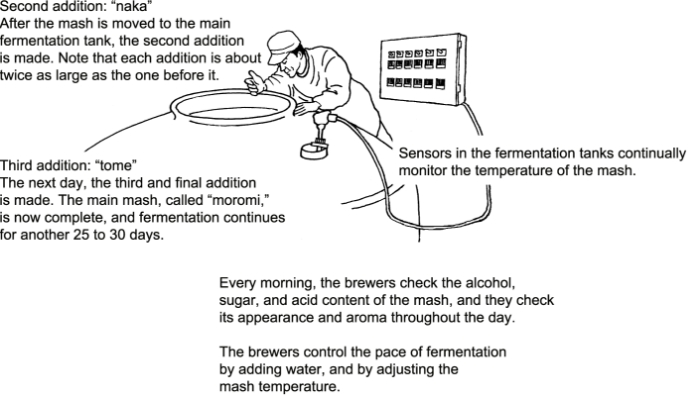6 Increasing the mash
Increasing the mash in three stages is a brewing fundamental.
In the ten days starting fermentation, the yeast has grown into a robust culture, and it is time to begin increasing the volume of the fermenting mash by adding more water, koji rice malt, and steamed rice. However, bringing the mash to full volume all at once once would weaken the yeast culture, so these ingredients are added in three stages over the course of four days. Gradually increasing the volume of the mash in three stages is one of the fundamentals of good sake brewing.
Three additions in four days
Day one= “Soe” first addition (koji + steamed rice + water)
Day two= “Odori” (a day of rest: nothing added)
Day three= “Naka” second addition (koji + steamed rice + water)
Day four= “Tome” third addition (koji + steamed rice + water)


To make good sake, you can’t pamper the brew.
When the mash reaches its full volume of about 2.5 tons of rice and four tons of water, fermentation begins in earnest. The enzymes of the koji continually convert starch to sugar, which the yeast then consume, and in the process, produce alcohol and the essences of the sake’s fragrance and flavor.
The most important element for proper fermentation is undoubtedly temperature control. From the yeast’s point of view, the most comfortable temperature is around 28°C, but at that temperature the yeast would grow too rapidly, producing only alcohol then dying before the fragrances and flavors are developed. Keeping the temperature of the mash below what is optimum for the yeast is absolutely essential for producing fine sake. Indeed, just as with children, over-pampering the brew will prevent it from reaching its full potential.




